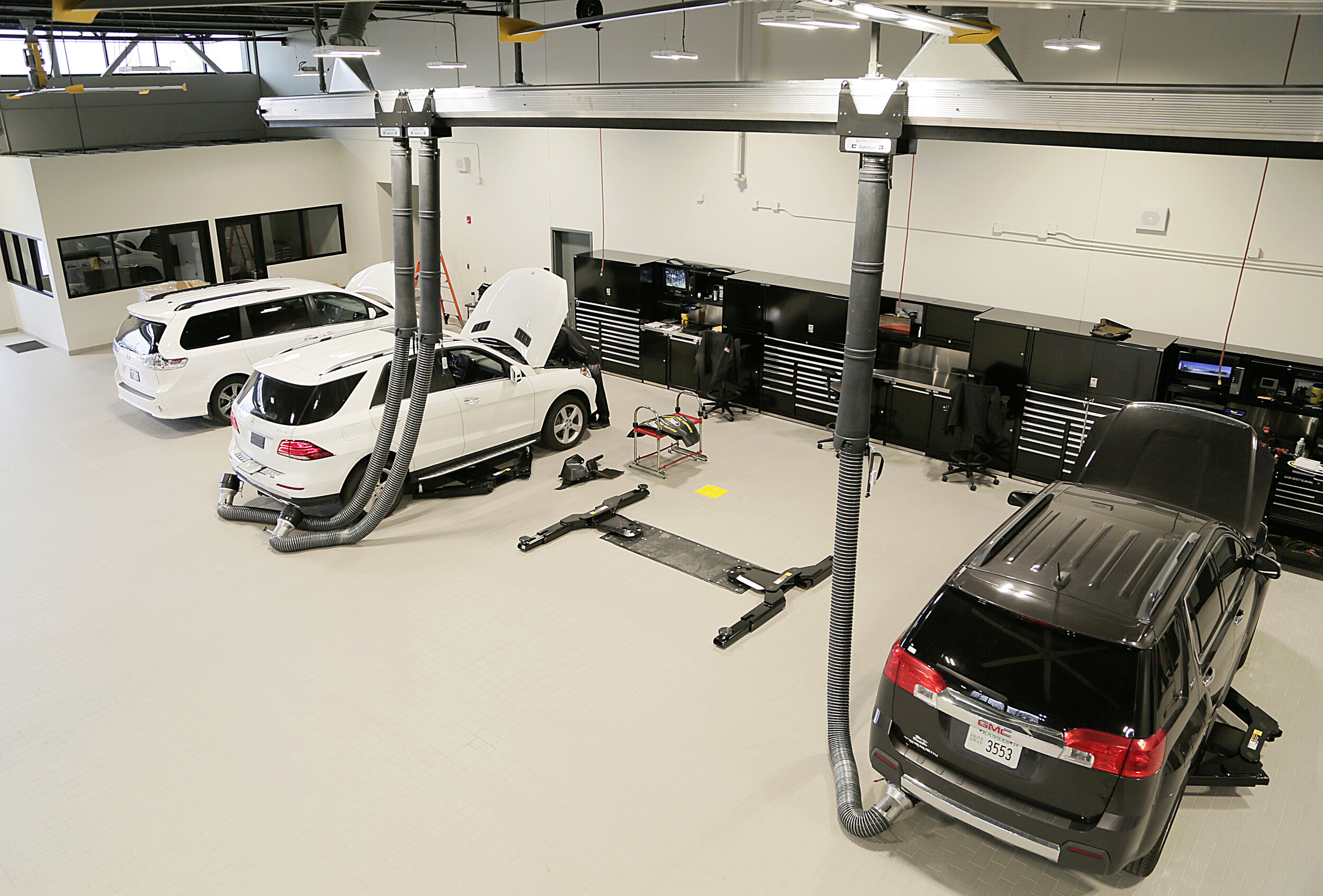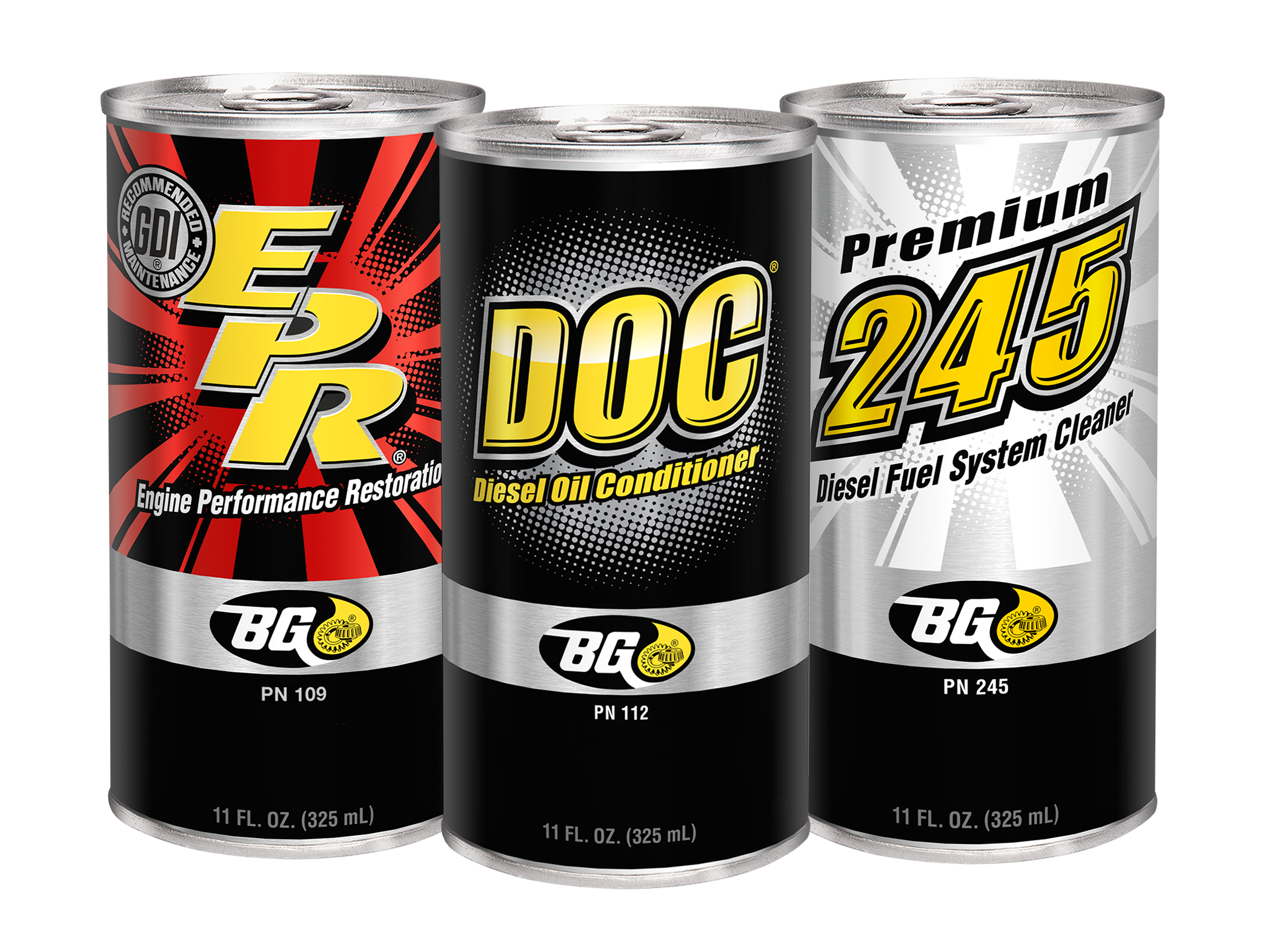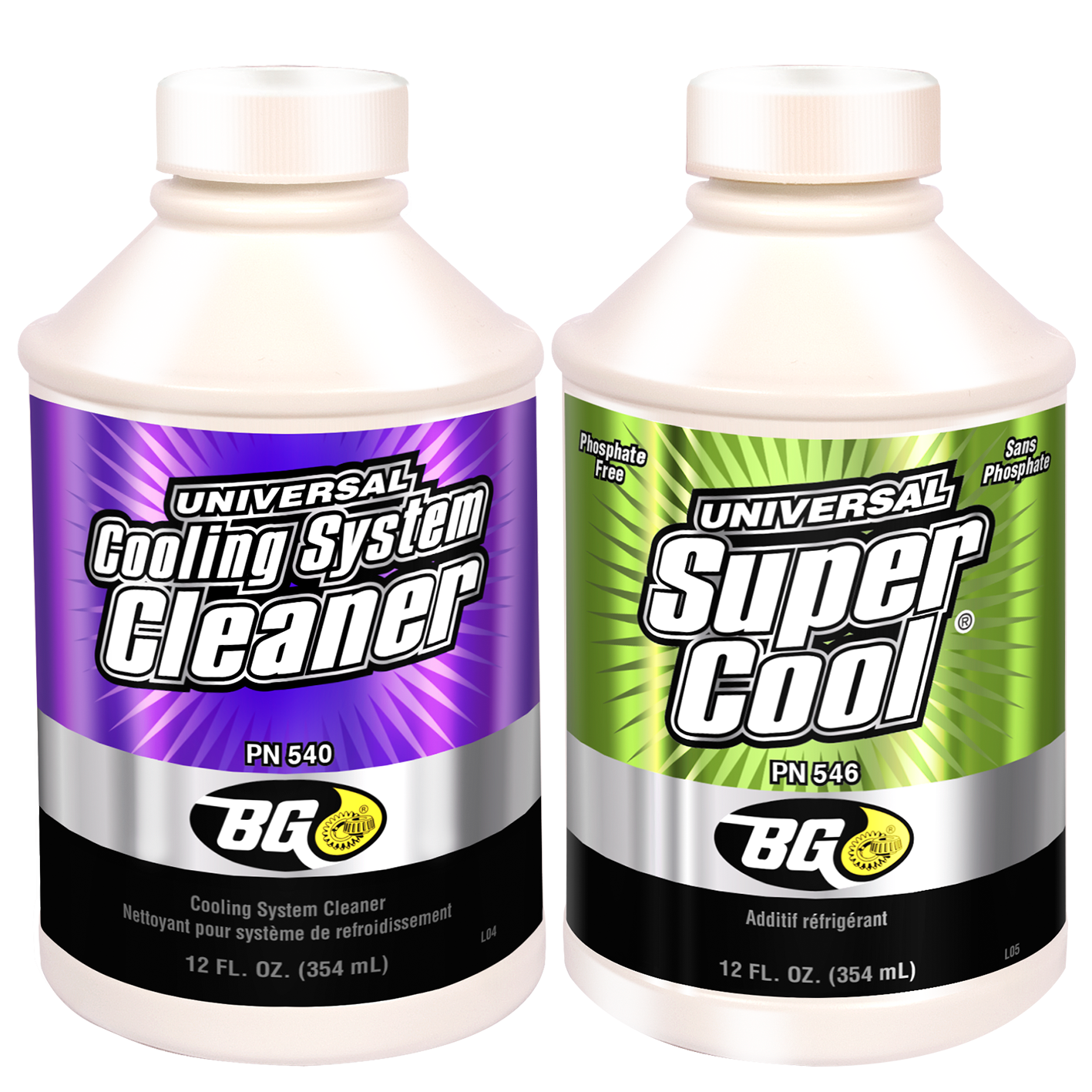
BG Services
Hybrid vehicles only occasionally use their petrol-powered engines. Without crankcase heating up, more fuel and water dilute the oil. In addition, prolonged drain intervals contribute to oil thickening and deposit formation. These heavy deposits can impede normal piston ring function; thus reducing fuel economy, lowering power output, and increasing harmful exhaust emissions and oil consumption.
Additionally, fuel dilution and acid formation can migrate from the top side of the combustion chamber and cause the engine oil to oxidize and thicken. This leads to piston ring sticking and unstable oil viscosity. Even high-quality synthetic oils will degrade eventually. Unless the oil is fortified with enhanced protection, deposits will form on many engine components.
Hybrid vehicles are typically equipped with Stop-Start technology. This means petrol is stored in a hybrid fuel system for long periods of time before it is used. When petrol sits in a fuel system for too long, it starts to oxidize.
To make matters worse, small, high output engines are extremely sensitive to deposits that build up on fuel injectors, intake ports, on intake valves and in combustion chambers. Even small amounts of deposits cause increased exhaust emissions, reduced fuel economy and drivability problems.
Petrol direct injection engines suffer from oil and fuel-based heavy deposits. Direct Injection engines need up-to-date chemistry and safety assured service procedures.
Sticky, heavy deposits build rapidly on the backs of valves and in air intake systems of petrol direct injection (GDI) engines. Cleaning intake valves requires a potent formula applied with proper equipment, due to both the placement of the injector inside the combustion chamber and the complexity of the intake design.
High operating temperatures, reduced engine cooling and prolonged drain intervals coupled with poor quality Australian petrol fuel can cause oil to break down and form sludge. Continuous thermal and oxidative breakdown contributes to oil thickening, heat retention and deposit formation. These heavy deposits can restrict proper oil flow, plug oil screens and filters and increase blow-by and oil consumption.
Australian special conditions; such as dusty, salty air and extreme hasten engine oil degradation. Add poor Australian petrol fuel quality with its high sulphur and conditions are more susceptible for engine oil sludge formation.
High operating temperatures, reduced engine cooling and prolonged drain intervals contribute to oil thickening, heat retention and deposit formation. These heavy deposits can impede normal piston ring function; thus reducing fuel economy, lowering power output, and increasing harmful exhaust emissions and oil consumption.
High operating pressures and temperatures put a lot of stress on diesel engine oils. Turbochargers, high engine idle, and direct fuel injection reduce oil life. Engine oil temperatures run high, resulting in oil breakdown and deposit formation in critical lubrication passageways. Emissions devices like EGR increase the soot accumulation in the oil. These systems place a heavy burden on the oil and push its stability to the limits.
With high combustion heat, acid formation from fuel blow-by, and soot overload, engine oils suffer from corrosive attack and abrasive wear, which eventually damage engine components.
Diesels are extremely sensitive to fuel degradation. Fuel breakdown byproducts impede injection and increase deposit buildup, leading to heavy exhaust emissions and power loss. In high-pressure common-rail (HPCR) direct injection engines, high temperatures and pressures can cause diesel fuel to break down into carbon deposits more quickly. The result is poor performance and potential engine damage.
Diesel engines are notorious for accumulating fuel residues that plug the EGR valve and build up into a severe thickness inside the intake manifold. This process markedly restricts airflow and interferes with the proper function of the EGR valve, which increases exhaust emissions and lowers fuel economy.
High operating pressures and temperatures increase the demands made on diesel engines. Compression loss due to deposit formation of the ring land area results in excessive blowby decreased power output and fuel economy.
Diesel engines are prone to the buildup of combustion deposits. These deposits decrease fuel economy, deform injector spray patterns, increase exhaust emissions, and lead to hard starts. Diesel injector internal deposits sized smaller than human hair will impede diesel injector spray patterns and create wear.
High operating temperatures, reduced engine cooling and prolonged drain intervals can cause oil to break down. Continuous thermal and oxidative breakdown contributes to oil thickening, heat retention and deposit formation. These heavy deposits can restrict proper oil flow, plug oil screens and filters and increase blow-by and oil consumption.
Australian special conditions; such as dusty, salty air and extreme heat hasten engine oil degradation. Diesel fuel variety in quality and conditions are more susceptible for engine oil sludge formation.
The majority of transmission malfunctions and repairs are related to transmission fluid deterioration.
Typical stop and go traffic conditions and higher operating temperatures speed up fluid deterioration, which causes the formation of residues on transmission components. These residues can lead to torque converter shudder, transmission slipping or erratic shifting.
Additionally, to get the utmost efficiency out of vehicles, many OEMs are relying on 8-, 9- and even 10-speed automatic transmissions. Having more gears improves the efficiency of existing engines and allows smaller, more economical engines to power larger vehicles.
Continuously Variable Transmissions (CVT) are subjected to severe wear and extreme pressure conditions because of high surface loading and continuous high speed operation.
One component vital to their proper operation is the presence of fast-acting anti-wear chemistry. The fluid in CVTs experiences severe thermal and oxidative stress which accelerates fluid degradation. Break-in wear metals and particulate contamination can greatly accelerate wear to transmission components and become a catalyst for oxidative aging.
Dual Clutch (DCT) and Direct-Shift Transmissions (DSG) are subjected to severe wear and extreme pressure conditions because of high surface loading and continuous high-speed operation.
One component vital to their proper operation is the presence of fast-acting anti-wear chemistry. The fluid in DCTs and DSGs experiences severe thermal and oxidative stress which accelerates fluid degradation. Break-in wear metals and particulate contamination can greatly accelerate wear to transmission components and become a catalyst for oxidative aging.
Vehicle power steering systems are subjected to high fluid pressures and temperatures which rapidly break down fluid lubrication capabilities over time. Under normal operation, continual “wear and tear” within the power steering system produces abrasive wear metals that cause seal and valve damage. More often than not, very expensive component failure occurs before the fluid in the system is changed.
Contamination of fluid is primarily caused by oxidation. This leads to deposit formation in the system which results in wear to the power steering pumps, rack and pinion assembly, and other components. Thus, these systems are plagued by excessive noise, wear and leakage.
Typical in almost all automotive cooling systems is the eventual formation of rust, scale or other corrosion by-products. Even the slightest build-up of these materials on heat transfer surfaces can drastically affect the engine’s ability to shed heat and thus, decrease the overall effectiveness of the cooling system. Rust, oil and scale build-up will also restrict the flow of coolant through the system, causing overheating and possible engine damage.
Over time, the protective additives in an engine coolant become depleted, thus rendering the coolant acidic and incapable of protecting the components in the system. This results in damaging corrosion in the formation of rust, scale and other debris that prevent proper engine temperature regulation. Left untreated, this condition may cause leaks, overheating, and, if left unchecked, drivability problems.
Over the course of a year, automotive A/C systems are exposed to a variety of weather and road conditions and are often ignored until they fail or the air quality suffers.
How often do climate control systems need to be serviced?
The proper functioning of the climate control system is important to customers. Harsh weather and driving conditions can lead to accumulation of road grime, debris, mould, and bacteria in the A/C. This debris pollutes the air flowing through the vents, which can be immediately noticed by vehicle owners.
A BG Climate Control Service should be performed annually each spring, paired with any refrigerant service or whenever musty odours are noted in a vehicle.
How to Perform the BG Climate Control Service
BG Frigi-Clean® is applied to the vehicle evaporator to remove mould, fungus, and other debris. BG Frigi-Fresh® is used to safely and effectively disinfect all the air vents. The BG Climate Control Service also includes the use of a high-performance oil, BG Frigi-Quiet®. This additive enhances cooling, ensures quieter operation, and prolongs compressor life.













High operating temperatures, reduced engine cooling and prolonged drain intervals contribute to oil thickening, heat retention and deposit formation. These heavy deposits can impede normal piston ring function; thus reducing fuel economy, lowering power output, and increasing harmful exhaust emissions and oil consumption.
Petrol Direct Injection engines are specifically prone to early deposit buildup on the piston surface, intake ports, injector tips and valves. As early as 32,000 km, deposits in GDI engines can cause dramatic efficiency losses and misfire codes with low km. Australian specific conditions such as heat and low-quality fuel hasten engine oil degradation. Add extended oil change intervals and these engines provide a lengthy incubation period for carbon deposits. Even high-quality synthetic oils will degrade eventually. Unless the oil is fortified with enhanced protection against high heat, premature and hard-to-remove deposits will form on many engine components.
Australian petrol fuel standard is far from world standard, resulting in faster deposit buildup and inefficient ignition, combustion and power output. In fact, Australian Petrol fuel can contain up to 15 times more sulphur than the rest of the developed countries. Downsized, boosted engines are extremely sensitive to deposits that build up in fuel injectors, intake ports, on intake valves and in combustion chambers. Even small amounts of deposits cause increased exhaust emissions, reduced fuel economy, and drivability problems.